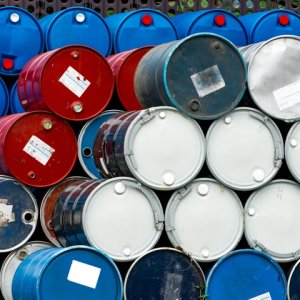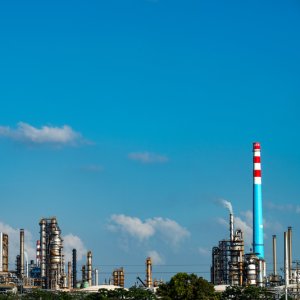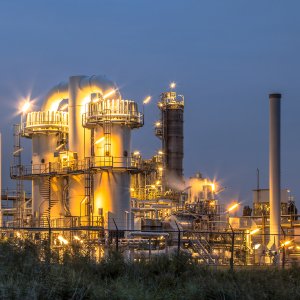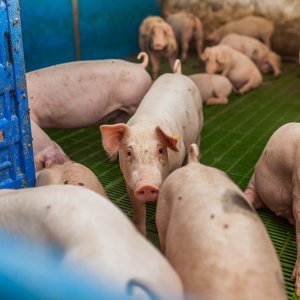E10 Must Be Restored as Norm to Bolster Biofuels: Enrique Olivera

STORY INLINE POST
Q: How did the structure of your company and product offering change as the pandemic unfolded?
A: Before the pandemic, we sold our proprietary high-octane premium biofuels, E10 regular blue 90 octane and super power 95 octane, at Wascon Blue service stations. With fewer people driving to work in addition to the gasoline and diesel government subsidies, the pandemic not only affected the consumption of fuel in general but also impacted the biofuel landscape in Mexico. The subsidies affected our margin for producing special fuels, reducing both our profits and the incentive to offer these products. To compensate, we adjusted our product offering and distribution channels to focus on conventional non-renewable fuels for sale at white-label gas stations.
Based on our volume and sales at our Wascon Blue-branded gas stations, traffic and demand are back to pre-pandemic numbers. In fact, we are selling more fuel than before the pandemic and our sales to white-label gas stations have also increased, which indicates that demand is back to normal.
Furthermore, there is a lack of terminals and transportation needed to move e-fuel imports in Mexico. We now must look for alternatives and change our logistics and operations in order to supply our customers on time.
Q: How has the biofuels market in Mexico changed over the past year?
A: There are three factors that impacted the biofuels environment in Mexico. First, the biofuels market in 2021 was dramatically affected by the government’s decision to reduce ethanol in gasoline from 10 percent to a maximum of 5.8 percent. Wascon invested to become the largest producer and promoter of E10 in Mexico but prior to 2021, we used 10 percent ethanol in gasoline-87 to generate 90 octane fuel, thereby offering a more efficient and inexpensive product. Unfortunately, the newly established norm of 5.8 percent ethanol is not enough to produce 90 octane at a competitive cost.
To obtain 87 octane fuel we would need to use 5.8 percent ethanol plus 4.2 percent of other components or aromatics, such as the costly and unsubsidized BTX or toluene. With the ethanol restriction, it is, therefore, more cost efficient to import and sell regular 87 octane gasoline, which indirectly reduces the demand for ethanol and biofuels in Mexico.
Furthermore, with the war in Ukraine, oil and gas prices increased to unexpected levels. To avoid higher inflation, the Mexican government decided to subsidize gasoline and diesel. This subsidy, combined with the percentage reduction in ethanol and the price increase for the components required to produce biofuels, are cost-prohibitive factors that have dramatically changed the biofuels landscape in Mexico.
Finally, US refineries produce mostly Blend Octane Base (BOB) 84 octane gasoline for domestic use. The country also produces 87 octane gasoline that is already blended with methyl tert-butyl ether (MTBE) for export to Mexico and other countries, which is sold at almost the same price as reformulated BOB 84 octane gasoline. Therefore, importing this gasoline, which is 100 percent subsidized by the government, is more cost-efficient than to produce and sell biofuels in Mexico. To make biofuels more viable in Mexico, E10 gasoline must become the norm again.
Q: What is the company’s focus to innovate its fuel offering in Latin America?
Wascon Blue’s mission is to bring innovative renewable energy to Latin America. We are focused on the evolution of fossil fuels and have developed strategies to produce and distribute our proprietary premium biofuel to meet European and California standards. Wascon Blue is constantly optimizing its product offering and business model but to offer the maximum benefits for biofuels we need the minimum of 10 percent ethanol in gasoline to be reinstated. Some of the benefits to the consumer are a 20 percent improved vehicle performance, up to 20 percent reduction in cost compared to competitor brands and a 50 percent reduction in polluting gases.
Q: To what extent are your products still tied to PEMEX infrastructure and contracts?
A: We now sell fuels to white-label stations, most of which is imported. In this resale of products, we are almost totally independent of PEMEX. However, we do operate some stations that depend fully on PEMEX products and are, therefore, tied to their infrastructure and contracts. The imported product is limited by region, mainly offered in Tuxpan and Veracruz, so we need to also buy from PEMEX for resale in stations further from the supply point. This is becoming challenging. First of all, there is a lack of transportation with permits issued by CRE. Due to insufficient imported products, the demand for PEMEX products has increased, causing bottlenecks at fuel-loading lines at terminals. This increases costs and makes us less competitive compared to PEMEX, which offers products delivered directly to its stations.
Q: How has your network of service stations grown over the last year?
A: We have not been able to grow our network service station over the last year since the government did not grant us any new permits for our brand, nor approval for four new stations. Hopefully, they get approved this year. We have a strategic growth plan and will invest in establishing new high-tech renewable energy-focused gas stations. We will install sustainable modular stations designed with solar panels to also provide electricity, a new concept in Mexico. Elsewhere, we have shorter-term plans to offer e-methanol gas stations, which are also the first of their kind in Mexico.
Q: To what extent have biofuels remained competitive given the price fluctuations affecting the downstream markets?
A: Producing and selling biofuels is no longer competitive in terms of price in Mexico. Ethanol is very competitive compared to other alternatives. But even though it is a better alternative, it is not used by the Mexican fuel importers. Instead, ethanol must be added to the gasoline just before sending it to the stations. which requires additional investment. However, the main problem is that gasoline is subsidized in Mexico and ethanol is not subsidized, so the advantage of using ethanol in gasoline is lost completely. It would be better to introduce the gasoline already blended with MTBE. Yet, even with the enormous advantage of using ethanol in gasoline, the Mexican government has not approved the use of 10 percent ethanol.
Q: How can Mexico become an important hub within the broader biofuels supply chain and manufacturing base?
A: In the simplest terms, biofuels are e-fuels, so they also include e-methanol produced using green hydrogen and CO2. Mexico has an enormous capacity to produce green hydrogen, e-methanol and e-fuel. With the war in Ukraine, oil prices have been increasing on a weekly basis, causing high fuel prices and inflation. At the same time, the world must reduce its oil dependence. Green energy is the best way to achieve this. We have plenty of wind and solar sources available in the country to become the largest North American producer of green hydrogen, e-methanol and e-fuel.
With e-methanol, Mexico would be able to become a very important part of the broader biofuel supply chain and manufacturing base for e-fuel supply in North America.
Even though the Mexican government is not promoting the production of renewable energy, it is investing in the energy transition and planning to produce green hydrogen to be blended with natural gas. With higher oil prices, it will soon undoubtedly become more competitive to produce e-methanol and e-fuel rather than gasoline and diesel.
Q: How big is the Mexican market for these solutions and how can they compete with gasoline, diesel or even natural gas in terms of price and performance?
A: In the short term, there is no way to replace Russian oil and gas supply no matter how much prices increase but e-methanol and e-fuel will eventually become a better and cheaper alternative. The European Community will invest to displace Russian fuels and starting this year, there will be a lot of green energy projects developed by Germany and other EU member states. This investment will also be expanded to Latin American countries. Chile is already building the first e-methanol and e-fuel plant in America. The project will start in 2022, using wind power to produce green hydrogen from water. This will then be combined with CO2 captured from the atmosphere to produce methanol. This e-methanol will be used to produce e-gasoline, which can be used in conventional vehicles, with no modifications required. This would make transportation carbon neutral. The plant is expected to produce 350 tons per year of crude methanol and 130,000 liters per year of gasoline. Both fuels will be stored in tanks and transported to Germany, replacing gasoline, diesel and natural gas imported from Russia. The project will allow Chile to play a crucial role in providing the world with an environmentally friendly, competitive fuel that does not generate emissions.
The Mexican government will not be able to continue subsidizing fuel prices. Sooner or later, we must look for better alternatives with green energy and e-methanol and e-fuel for our transport. Wascon Blue is already working to develop the first project to produce e-methanol and e-fuel in Mexico, which is our primary objective that we hope to achieve by 2023. The company wants to be the first in Mexico to offer M-15 and e-fuel, a better and cheaper gasoline than the conventional fuel subsidized by the government. Even with fuel subsidies, e-methanol and e-fuel will become the cheaper option.








 By Conal Quinn | Journalist & Industry Analyst -
Fri, 07/01/2022 - 12:39
By Conal Quinn | Journalist & Industry Analyst -
Fri, 07/01/2022 - 12:39
















